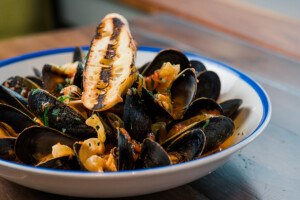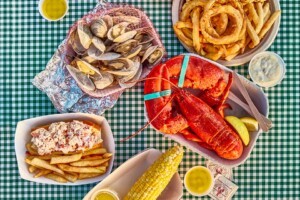Eat Like a Pilgrim: Three 17th-Century Recipes to Try This Thanksgiving
In some ways, Thanksgiving is the ultimate Throwback Thursday. Here in Massachusetts, we’re surrounded by reminders of the origins of this holiday—from the 350-year-old buildings scattered throughout the state to “living museums” like Plimoth Plantation, where historical re-enactors recreate the archaeologically researched lives of the English and Native people who lived in this South Shore community during the 17th century.
Every year, Plimoth Plantation hosts its own Thanksgiving celebrations. But if you can’t make it out to those, you can still experience a holiday meal the way the early Puritans might have. The Partnership of the Historic Bostons, a local nonprofit group, has put out a collection of Puritan and Native recipes called The Pleasure of the Taste: Recipes from 17th century New England. We decided to make a few of them for ourselves—and you can too. Check out these three recipes below.
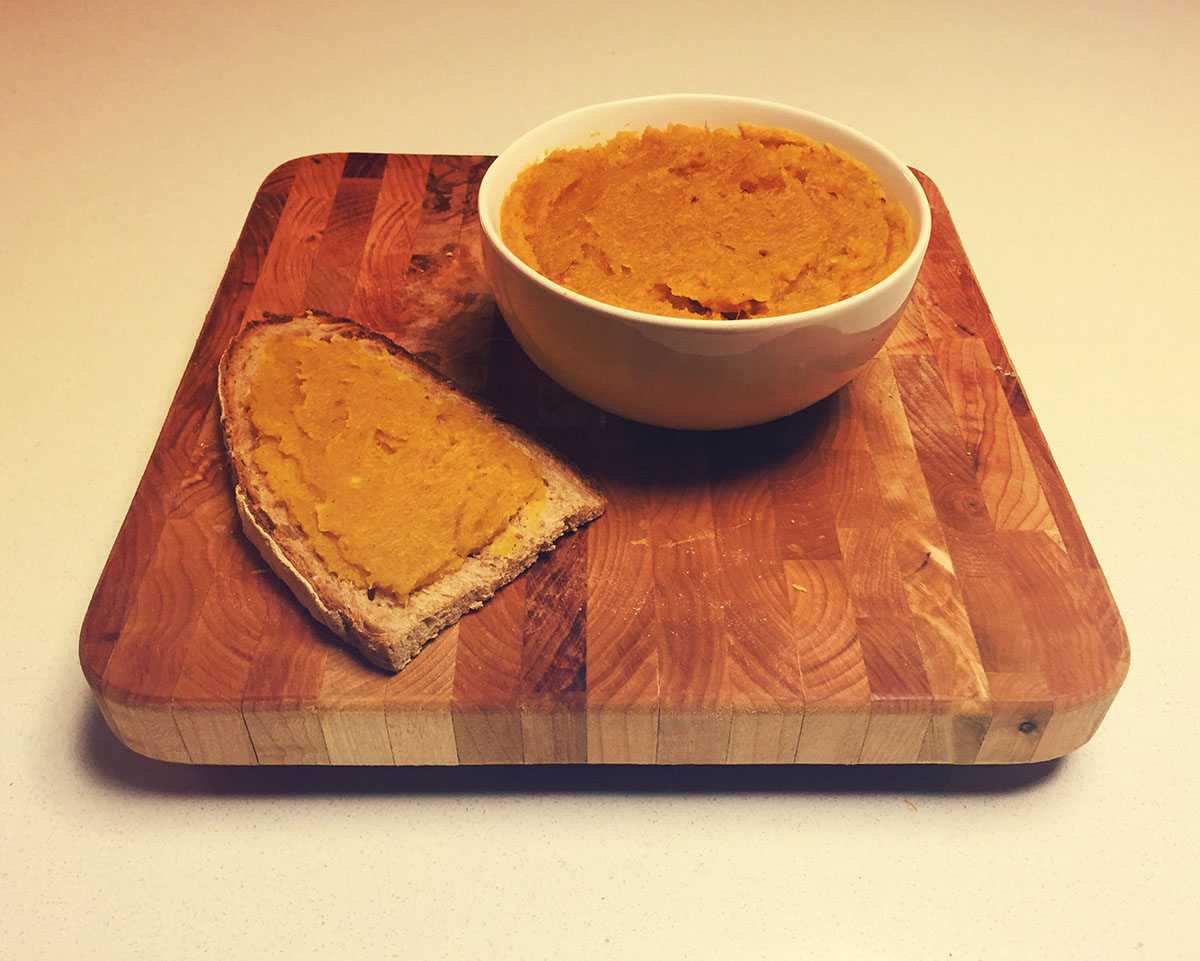
Boiled pumpkin / Photo by Shaula Clark
Boiled Pumpkin
Recipe tested by Shaula Clark
The Pleasure of the Taste takes this pumpkin recipe from the writings of John Josselyn, a traveler to New England in the 1600s, adapted from his Two Voyages to New England.
Back then, pumpkins—called “pompkins” or “pompions,” an all-purpose word for squash by English people in the 17th century—were such a food staple for the colonists that, according to the then-contemporary A Classical Dictionary of the Vulgar Tongue, the term was used as an epithet for people from Boston. (“Pompkinshire” was also used to refer to “Boston and its dependencies.”) Originally, this dish would probably be made in a stewpot cooking over a fire, but Plimoth Plantation’s resident culinarian Kathleen Wall—who provided many of the recipes for Pleasure of the Taste— has adapted it for modern kitchens.
So how does it taste? In a world of sugary Pumpkin Spice Everything, the flavor of a savory pumpkin dish accented with cinnamon and nutmeg might seem a little jarring. But this variation on the classic pureed butternut squash makes for a solid side dish. And it has great potential for Thanksgiving-leftovers sandwich filling—slather it on some bread with with some cranberry sauce, turkey, and maybe some good cheese and/or mustard, and you’ll see what we mean.
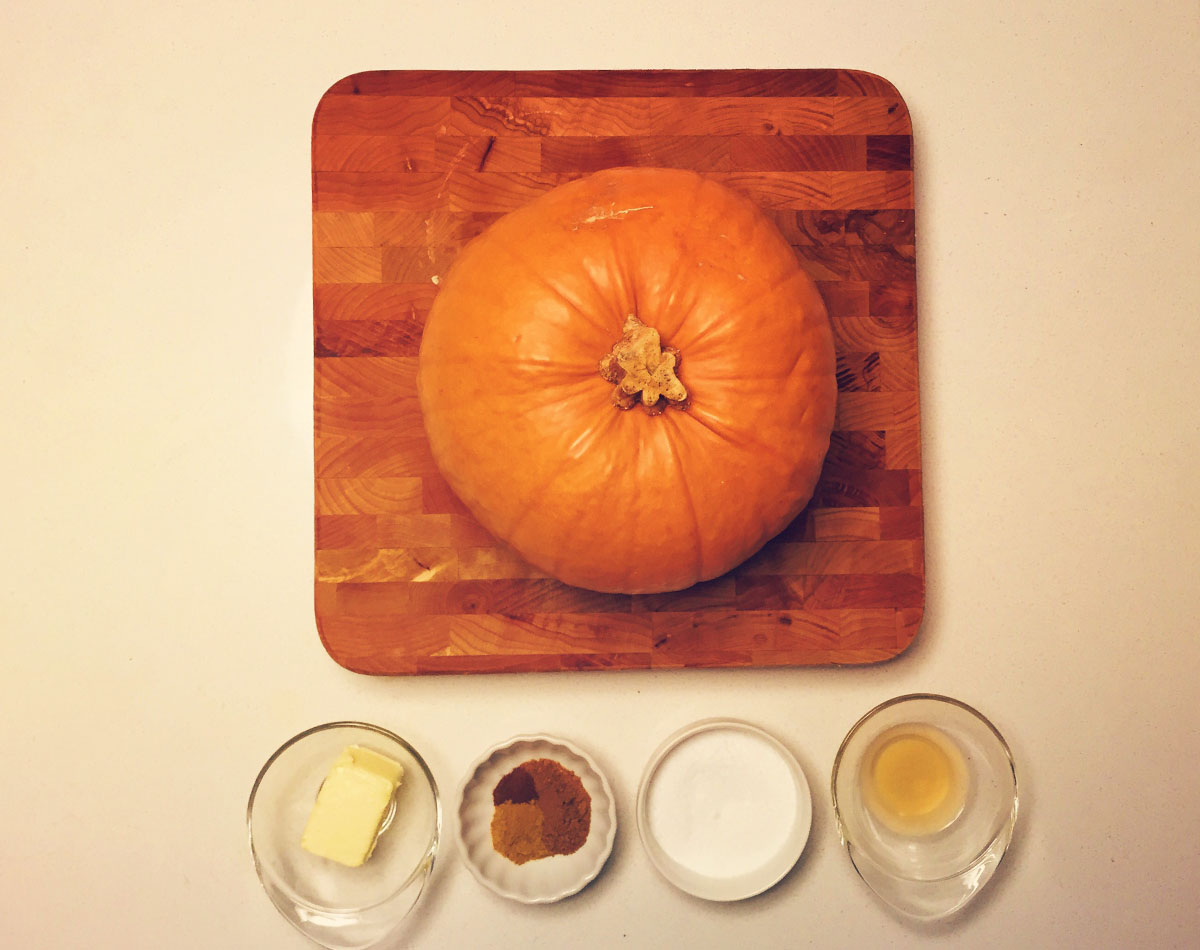
Boiled pumpkin recipe ingredients / Photo by Colin Kingsbury
Ingredients:
- 1 fresh pumpkin (to make 4 cups of cooked)
- 3 tablespoons butter
- 2 teaspoons cider vinegar
- 2 teaspoons ground ginger
- 1 teaspoon salt
- 1 teaspoon cinnamon
Bake, roast, or steam the pumpkin, separating the flesh from the seeds and skin. This can be done ahead of time and refrigerated for several days, or frozen until you need it.
When the pumpkin is cooked to a pulp, transfer it to a pan and heat gently. (Note: we used a potato masher to get the consistency we were looking for.) Add the butter; when it melts and you have mixed it thoroughly, add the cider vinegar and mix well. Add two teaspoons of ground ginger and 1 teaspoon of salt; mix.
Now taste. Add more vinegar if you’d like it tart, a half teaspoonful at a time. A little flat? Add more spice—perhaps a teaspoon of cinnamon or a half teaspoon of nutmeg. Too tart? Add a little more butter, a teaspoon at a time. Serve hot on its own or on bread.
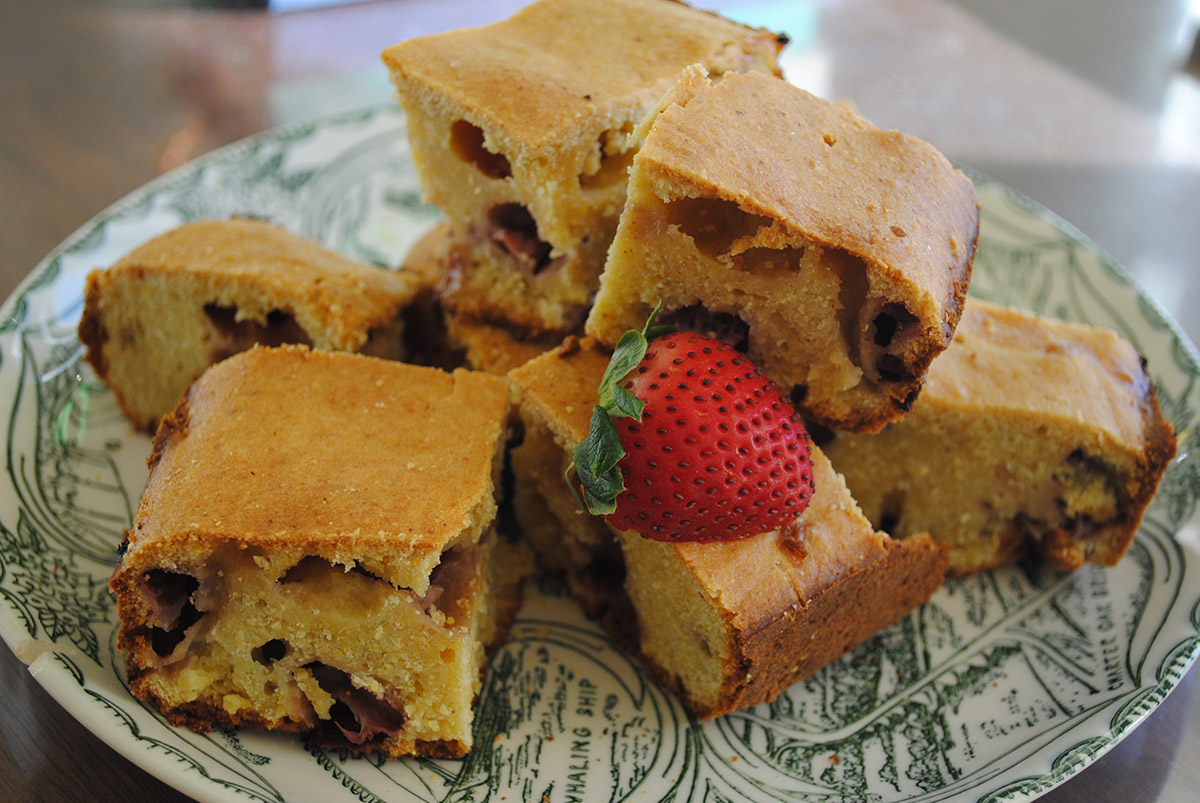
Strawberry cornbread / Photo by Madeline Bilis
Narragansett Strawberry Cornbread
Recipe tested by Madeline Bilis
We’d never heard of—or thought of—mixing strawberries with cornbread before, but the Narragansett had the right idea in doing so. The tribe included the fruit in their Thanksgiving celebrations, and the English Puritan settlers were huge fans. According to The Pleasure of the Taste, Massachusetts Bay Colony leader John Winthrop first mentioned strawberries from the colonies in one of his journals. They proved to be a treat for a people who’d been living on ships for months, their diets restricted to dried biscuits and salted pork.
This recipe has a good amount of choices to make when it comes to substitutes, but our decision to go with yellow cornmeal, flour, milk, butter, and sugar resulted in a moist and just-sweet-enough loaf that complements a meal or tops one off as a dessert.
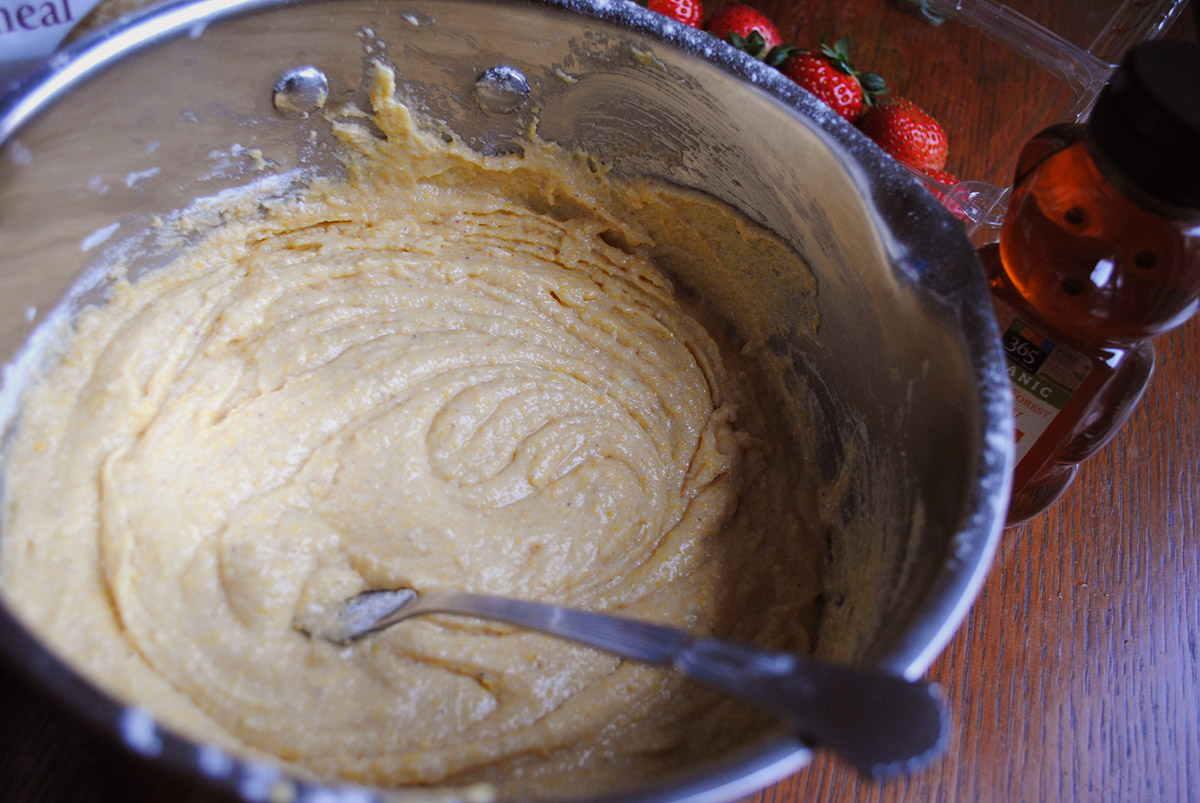
Strawberry cornbread batter / Photo by Madeline Bilis
Ingredients:
- 1 ¼ cups stone ground yellow cornmeal or 1 ¼ cups stone ground white cornmeal (We used yellow)
- 1 cup corn flour or all purpose flour (We used all purpose flour)
- 1 cup spring water or 1 cup milk (We used milk)
- ¼ cup oil or ¼ cup melted butter (We used butter)
- 1 large egg
- ½ cup diced strawberries
- ¼ cup maple syrup, honey, or sugar (We used sugar with a few squirts of honey)
Heat oven to 400 degrees. Oil the bottom and sides of an 8-inch or 9-inch pie plate or round pan. Mix water or milk, oil or butter, and the egg in a large bowl with a wire whisk. Combine the remaining ingredients except the strawberries, stirring just until the flour is moistened (the batter will be lumping). Add strawberries and mix gently. Pour into the pan.
Bake 20 to 25 minutes or until golden brown and a toothpick inserted in center comes out clean. Serve warm if desired. Makes 6 to 8 servings.
Variations:
- Substitute strawberries with blueberries, blackberries, or cranberries
- Serve with maple syrup, honey, or jam
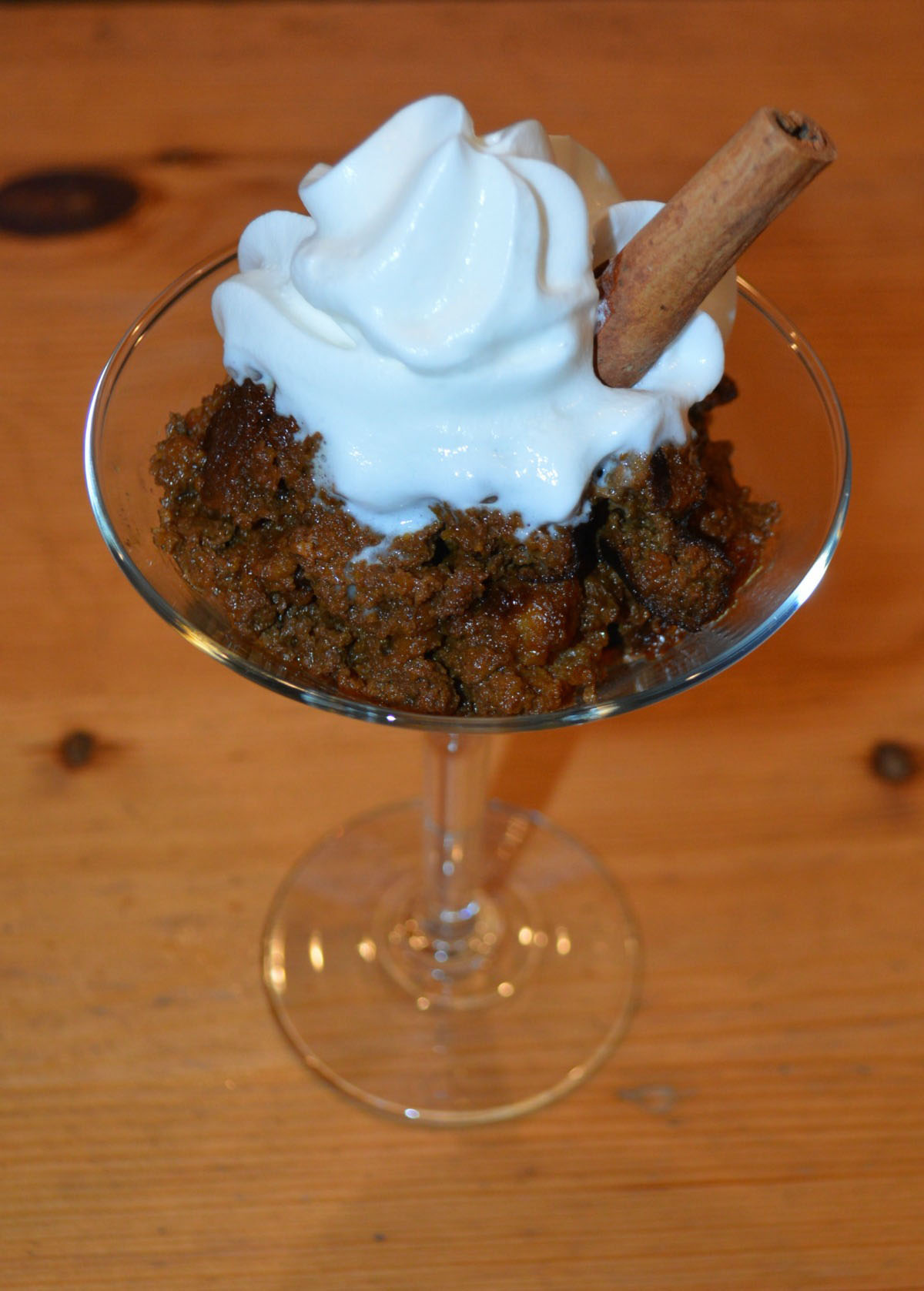
Sweet Indian corn pudding / Photo by Asia Bradlee
Sweet Indian Corn Pudding
Recipe tested by Asia Bradlee
Slow cookers may not have been invented in the time of the Puritans, but The Pleasure of the Taste has adapted this classic New England dessert to fit the modern, hectic holidays. The pudding originally gets its name from the Native American cornmeal, which was traditionally combined with milk and molasses and boiled for a long period of time. According to Wall, the pudding was a product of trade commodities: corn from the Native Americans, molasses from the Caribbean, and milk from the European colonists.
The pudding is made with simple ingredients and requires little work, thanks to the slow cooker. As the pudding cooks, your house will fill with the warm scent of cinnamon and molasses, making you drool all day. The sweet molasses flavor goes well with a dollop of whip cream, vanilla ice cream, or even a scoop of Greek yogurt. And while not very visually appealing, the pudding’s presentation can be jazzed up by serving it in a festive glass with a cinnamon stick garnish.
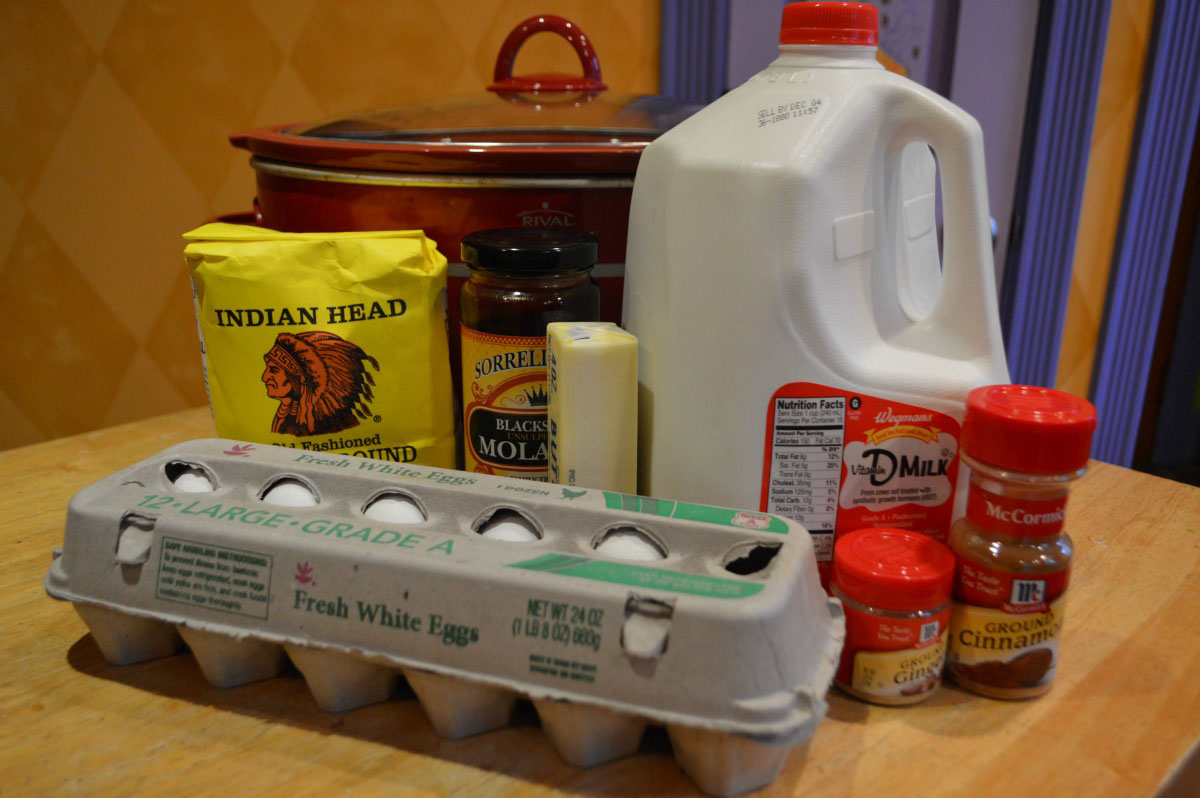
Sweet Indian corn pudding ingredients / Photo by Asia Bradlee
Ingredients:
- 3 quarts milk
- 2 cups cornmeal
- 1 jar (12 oz) of molasses (non-sulphured or mild)
- 1 stick butter
- 6 eggs
- 4 teaspoons cinnamon
- 2 teaspoons ground ginger
Butter a large slow cooker and pre-heat on high (we used non-stick spray instead of coating with butter). Put to one side.
Using a large heavy-bottomed pan on the stove, heat the milk. The milk will rise up when it heats, so give it plenty of room. When the milk is just under a boil (with lots of bubbles forming), whisk the cornmeal; keep stirring until the cornmeal thickens, about 10-15 minutes. Add the rest of the butter, turn off the heat, cover the pan.
Beat the eggs with the molasses and the spices. Add some of the hot corn/milk mixture to temper the eggs and then add it to the rest of the corn mixture. Blend thoroughly. Scrape into the buttered, pre-heated slow cooker.
Cook on low heat for 6-8 hours. Serve with vanilla ice cream, or with whipped or light cream.
There are dozens of other recipes in The Pleasure of the Taste booklet. It’s available for purchase here.

